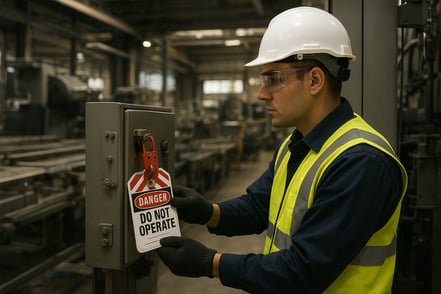For those organisations that can see the inherent value in the Digital Experiential Training perspective, you may be interested in understanding if there are 'market ready' solutions in this space that can create value immediately.
The answer is yes, there are. Let's look at the main types of solutions currently available:
-
PC or tablet based immersive creation tools.
These are tools for creation of PC or tablet based content which provides a greater level of engagement and interactivity than what can currently be achieved through eLearning creation tools. These solutions represent a good step up from eLearning.The content can be 360 degree image-based or 3D model-based, generally combined with traditional 2D content such as slides & videos. Whilst the content is still two-dimensional in nature (i.e., screen-based), the content is a lot more engaging than what standard eLearning creators allow.
These types of solutions allow organisations to leverage a lot of existing 2D content and augment this with a small amount of more immersive content such as 360 imagery / 3D models. A key point to keep in mind with these solutions is the future-proof nature of the content. Meaning can it be re-used in a more immersive format like VR or AR at a later date, or does the content need to be recreated from scratch.
However, depending on the nature of the training topic, 2D screen-based content may still not be sufficiently realistic.
-
The next step up from this content in terms of engagement and true experiential nature, is to use a fully immersive format such as Virtual Reality or Mixed Reality.
In this area, the main solutions are Virtual Reality self-authoring tools. These tools allow for the creation of VR-based learning content (although some also allow the same content to be used in non-immersive, 2D formats such as tablet/PC). These solutions generally come in the form of a subscription based creation tool, similar to eLearning creation tools.
However, there is currently still a lot of variation in these offerings, and not all of them meet the requirements for a DET category solution, for example:
- Low code vs No code solutions. Low code means that some type of coding is still required, albeit 'low', this will still require a specialist skill set internally, or vendor-supplied service.
- Usability of these tools and the ensuing content varies quite a bit in practice, this can impact how easy it is for learners to use and SMEs to create content; potentially limiting adoption and ROI.
- Content types available. Some offerings only allow for creation of one type of immersive content (360 imagery or 3D model based). Whilst one content type may be sufficient for initial use cases (e.g., 360 for a site induction), investment in hardware and change management likely dictates that a more future-proof solution that allows for multiple content types is the better solution.
- Asynchronous & collaborative learning. Another common limitation is that content can only be used asynchronously or individually. Again, whilst this may not be an issue for initial use cases, a more flexible solution which offers both collaborative and individual learning options may represent better long term value.
The list of offerings is growing rapidly as more and more organisations are realising the benefit of scalable, experience-based training. Now is a great time for organisations to get involved and shift to the next generation of workplace training.




Comments